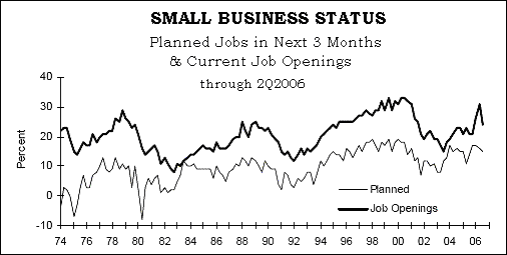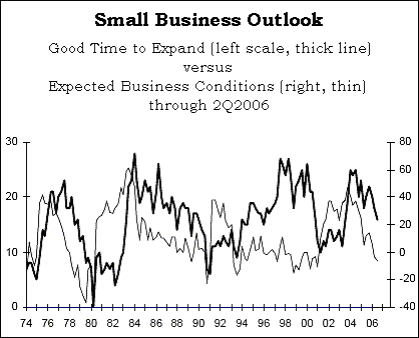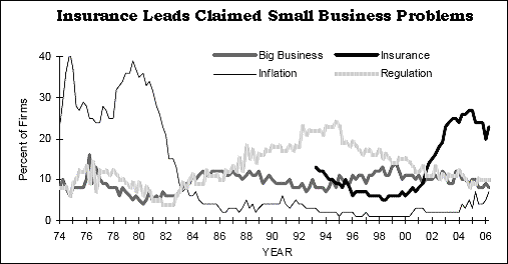Anatomy of Jobs Fraud
On the first Friday of every month, observers of the USEconomy, armchair critics of official policy, cheerleaders to the American dream, spin doctors on Wall Street, and an army of investors wait with baited breath for the mass of horse pucky, meadow muffins, and road apples that is the stuff of the JOBS REPORT, a surefire conjob if there ever was one. The particular fraud hides behind an exotic but valid statistical method, one used legitimately in many forecast settings, but not here in this setting. The Jobs Report has been the subject of much attention in the last few years, as the economic recovery has been scrutinized, criticized, and exaggerated. Population growth calls for 150 thousand new jobs to be created each month just to keep pace and stay neutral. Despite the political ballyhoo of strong job growth, this has been the weakest recovery in modern history. The central problem is that appropriate monetary policy cannot be decided upon in the midst of such colossal numeric drivel passed off as analytic estimation. The main job driver is a charade from a mysterious statistical model.

Some general background is essential on statistical fraud, lies, and distortions. They are the paraphernalia of lost and desperate banking leaders, the broken tools of a corrupted cadre of clueless captains of aberrant tuned financial engineering contraptions. Both men and machine have gone badly awry. It seems the only answers dealt and broadcasted are deeper debt, bolder lies, as well as constant justification for more foreign investment capital and for wider war abroad and a structurally defective domestic economy. The trouble with open societies is that the more keen observers can expose the trickery. The rest depends upon the public interest in paying enough attention, in thinking more than necessary for a dull re-run on television, in making sense of the patterned falsehoods, and lastly comprehending the motive to lie. In the table are major economic statistics, their instrument of lie, and apparent motive. Sadly, not a single major economic statistic is a truthful representation of the current condition.
My contention is that a recession has been in progress on & off & on for five years running. It explains many actual riddles and phony conundrums. If officials cannot explain a contradiction to their charade, give it a fancy name, to wit "conundrum" works well. After passage through "truth filters" to purify certain official statistics, much more sense can be made of the anomalous set of signals which have been flashing orange for so long that most people consider them part of the normal ambient environment. The USEconomy is in a stall, after recognition of the 4% to 5% exaggeration in the Gross Domestic Product. This is an ongoing theme of mine. The CPI is 4% too low, which necessarily means the GDP is 4% overstated at least, since these two measures work in tandem on the inherent distortions. We were in a stall all last year, and in a recession right now, as in NOW.
BACKGROUND OF JOBS FRAUD
Some background, a little history, and a scorecard puts the aggregate fraud into perspective. Valuable details help to establish, in legal parlance, a prima facie (first face) for fraud. Back in year 2000, the Bureau of Labor Statistics decided to enhance their primitive "bias factor" which bridged the gap between its employment surveys and the IRS tax data. What was once a simple fixed addition each month has become an elaborate model, one certain to rival the slick devices utilized in the other doctored statistics. The jobs estimate and its parent model have come of age. The Birth-Death (B-D) model was up to the job of creating an ever increasing number of jobs, in itemized categories no less, to aid the political charlatans seeking approval and re-election. It joined the other equally massive statistical lies which clutter the financial journals.
As new businesses are formed and new jobs arise, they are nearly impossible to properly track when business deaths occurs simultaneously. After the fact, the BLS learns the details of job creation which lag in time, slow to become known. As they occur, the BLS learns of details of job deaths. So they created a statistical model in order to estimate new job counts. They offer little information in defense, and do not even bother to include the B-D additions in the official statement, making no reference to it. Each month my monitor takes a gander at the latest fiction. See the official CES Net Birth-Death Model thumbnail description and data, being sure to scroll down to the current year. It seems they choose to claim plausible deniability in fraud by providing the information, but sending it to disjointed destinations without links. Their bread crumbs are thus scattered.
The actual method is a very sophisticated time series technique, one called an autoregressive integrated moving average model, this one of eleventh order, or ARIMA(11). It takes the ratio of job births to job deaths each month, then treats those differences sequentially, then estimates future ratio differences based upon a long weighted combination of eleven previous ratio differences. Nearby months matter more than distant past months. With known job deaths come estimates of job births in the most recent months, after working out differences. It sounds pretty cool, but is overly complicated and indefensible. Please demonstrate the model efficacy by F-stats on the ratio difference model, and why not simply the ratio model utilized. However, the basis of the model is built from the dynamics of yesteryears. So many changes have come to the global economy since 1999 that defy quantification, let alone continued trends to permit assumptions to be deemed valid. Please demonstrate the validity in past historical years in backcasting (past forecasts versus actuals), which pass through the 1999 to 2002 time frame where structural changes in global trade occurred. Outsourcing to China and India are so rampant that the entire system continuity cannot be taken for granted anymore. In 2007 it is very possible that a stall to outsourcing might again render the Birth-Death a further embarrassment.
The autoregressive models from my past experience make sense, in forecasting sunspots and tidal reaches in nature. This is due to the minimal influence of external forces, perhaps with the exception of Halley's Comet. These models are useful in other cyclical settings, but few applications in my judgment make sense in economic settings. Cycles within nature make sense, since the human organism cannot yet screw it up. Well just wait, as global warming and carbon dioxide levels might prove the exception. Economic cycles are so skewed, that rational devices to forecast them have been rendered nearly meaningless, even by most Nobel Prize Economists who sport their farcical models of 200 variables with little claimed accuracy whatsoever. We tend to be impressed by either elaborate nonsensical soliloquies from Greenspan, or elaborate nonsensical statistical models. A rule in statistical artistry prevails, that parsimony is preferable to complexity. That means being stingy in building only a few components for a statistical model is a wise practice. Pay attention, Samuelson and Friedman, since you violate this rule yet receive adulation without merit. There is no business cycle anymore, only the credit cycle, and even it has been turned on its ear with a credit explosion soon to challenge the Weimar period.
MAGNITUDE OF THE FRAUD
In private Hat Trick Letter reports, details have been cited for the springtime Birth-Death model adjustments to the monthly Jobs Report. They are so large as to be almost comical. They stick out like giant thumbs, yet somehow avoid mention by financial media and many major publications. Certain journals will mention the outsized B-D adjustment, with little follow through, little explanation, a seeming avoidance of a laughable factor. In the 2Q2006, the months of April May June had reported 329 thousand new jobs. The knucklehead Birth-Death model coughed up a mindboggling 657 thousand mythical jobs. Without the hefty B-D contributions, the Bureau of Labor Statistics would have fallen down on the job, and been forced to report the more likely a loss of 328 thousand jobs!!! Now that would be embarrassing. Nowhere do the B-D shenanigans stick out so boldly and blatantly as in the second quarter. For all of 2006, we have been informed that 715k of the 854k new jobs actually originated from this fabricated B-D device, which means 83% of new jobs are from a convenient indefensible sham divorced from reality. This is unacceptable and simply not credible.
What if reality actually dictates that pen record outright job loss? What do they do? Methinks THEY SKEW IT. Does political expedient render such an honest report never to be written? Methinks YES. Is institutionalized dishonesty engrained to the core of America? Methinks YES, WITHOUT ANY QUESTION WHATSOEVER!!! Just what is the scandal of the month this month. Well, it is back-dated executive stock options, for three months running. The dishonesty of America is our chief characteristic noted by foreigners. They no longer believe most of our official statistics. Why the heck should they? They are almost all lies, useful to paint a picture of strength. The European Union economy is leaps & bounds stronger than the US's in almost every conceivable category.
If the Q2 trend in the B-D data were real, and were repeated over four quarters, that would be a post-war record in employment expansion for a single year. What an utter joke! On an annualized basis, the spring months would represent the most powerful economic recovery in job creation terms in modern history!!! Yet intrepid talking heads never even mention the main job creation ledger item, the goofy B-D model. We are being made fools of by the USGovt stat rats. Well, not all of us, certainly not those of us who keep our eyes open and keep our minds rigid in a dubious gear. It is especially difficult for analysts without statistical familiarity to challenge such methods. For the actual model to be established as valid, a clear-cut relationship must be demonstrated from past historical data. The outsourcing trend casts a strong doubt on the entire claim of births from new business creation. Job loss has been rampant. Although IRS receipts indicate some robust strength from less visible chambers of the economy, the sheer magnitude of the numbers testify to statistical fraud. This recovery is the weakest and most feeble in modern history. The B-D contributions have at times been record setting.
IMPLICATIONS OF DECEPTION
The USFed is not as major an influence as its reputation indicates, compared to its role as director of new debt issuance. They do provide significant cheerleader guidance and direction. So far, the bond market has given the USFed and its band of governors an "irrelevant" grade. The Fed Funds target stands at 5.25% which is fully 40 basis points above both the 2-yr TBill yield and the 10-yr TNote yield. The discrepancy is a major insult to the Federal Reserve and its prestige. The message is "you guys are dead wrong on policy." This is probably the biggest single reason why the USFed passed on yet another rate hike on August 9th. They would have confused the bond market on a massive scale with another rate hike, not to mention the deeper embarrassment. They have actually dictated an inverted Treasury Yield Curve, a travesty to any claim in professional competence. These guys are clowns and hacks, an embarrassment to other central banks which look to the US for leadership sorely lacking. Given Bernanke's boast of relishing the opportunity to manage the yield curve, one must conclude a failure so far. It is stuck in a flat mode and inverted on the short end.
The USFed does influence the money supply, thus their desire to remove it from the public radar. Games are surely being played, illicit without a shadow of doubt. Given the slowdown in progress, the governors and the board absolutely must keep the monetary spigot flowing. Given the housing decline in progress, the official managers of bond liquidity infusions cannot afford a mistake. Chairman Bernanke has boasted incessantly about his willingness to flood the USEconomy, to drop money via helicopters, to resist a recession. Well, now is his chance. But if he and his merry band of charlatans actually believe their official Jobs Report fiction, and act upon it falsehoods, they might fall down on the job and send the USS America toward the shoals, if not icebergs. They must resist the building downward momentum in money destruction from debt default and erosion in home equity.
The total housing stock value is on the order of $20 trillion inside the United States. A typical decline could shave a few trillion dollars. The impact to spendable cash floating around would and will be massive, certain to spill onto financial markets. The USFed must counter this, and NOT BE LATE. They must not time their requisite anticipated rescue incorrectly. They must not miscalculate. They must not fall victim to the nonsensical manure-laden propaganda issued within Jobs Reports. Their news releases read like a political promotional paid blurbs, the 60-second spot clips. They must not permit the fire in the monetary press engines to go dim. They must offset the gargantuan money destruction in progress. Now is the time for the governors to make sure they stop talking tough and actually keep the monetary engines running without abatement.
Another statistic caught my eye in the past month. For three years, my forecast was for an expected grand spinning of gears which will be historic in nature, for its inefficiency. It points out the futility of money and credit creation. The USEconomy requires evermore new money to keep a basic treadmill with flat growth. In the 1Q2006 it took $7.50 of new total debt (financial + non-financial) to produce a single $1 in new Gross Domestic Product growth. The longstanding historical average is 1.4 to 1 in this ratio. New money is not being used efficiently. Rather, it is used in desperation to keep the system going. In order to prevent a recession, even more rapid debt growth might push the ratio toward 10 to 1. These are Weimar performance numbers. These practices are nowhere near to reverse in trend, discussed in the Hat Trick Letter as to where the money goes. So the USFed must actually lead the movement toward EVEN WORSE INEFFICIENCY, or else face the extremely powerful negative momentum from debt and asset deflation. Housing has the potential power to cause such momentum, first within the economy and second within financial markets.
Once the housing decline gets a deeper grip in its downward momentum, it will be incredibly difficult to stop, and even harder to reverse. The numerous rate hikes by the USFed have had an horrendous impact on adjustable rate mortgages (ARM). Their repricing has set off shock waves. Distressed property sales will flood the system soon, if not already. Stories are widespread, common, universal of enormous monthly payment increases, of sales with inadequate funds to cover mortgages upon sale (called "short sales"), of fast rising inventory of unsold properties (especially condominiums), of homeowners from recent purchases realizing they are underwater suddenly. An estimated 40% of home buyers in 2005 and 2006 are underwater, owing more than their equity. A disaster is upon us. A tough talking USFed is counter-productive in such a climate, since inflation is not the pressing issue, but rather debt deflation and asset deflation. My image is one of parents with their back to the swimming pool, where the child is in the process of drowning. The parents are preoccupied by the pump and filtration system for the pool. Enough of this moronic mindless monetary testosterone test already!!!
SMALL BUSINESS SNAPSHOTS
The National Federation of Independent Businesses is an organization of over half a million small business operators. Its monthly surveys offer a cornucopia of information. Much of it contradicts the official robust story for huge Birth-Death job additions this spring. Let's back up my claim of distortion. See the NFIB Reports here. The small business sector does not report a promising jobs picture, especially for current job openings. Notice how current listed openings have fallen rather sharply in the second quarter. This in no way coincides with the giant Birth-Death job additions logged by the hotshots at the BLS.

Neither has the expansion outlook born of business expectations shown anything but a poor perceived climate since 2004. Sentiment among small business owners has deteriorated steadily and vividly in the last two and a half years. The outlook has worsened steadily this spring.

A very interesting snapshot of their greatest problem types is displayed. This is rich information in my opinion. Notice how the threatening shadow of big business has waned, only to be replaced by massive concerns over insurance costs. The World Trade Center in 2001 obliteration might have galvanized the war machine, but it also ignited costs for business coverage. The hurricanes of 2005 seem to have had little overall impact. Yet try to tell that to coastal business entrepreneurs from Florida to North Carolina to New Jersey, even as far north as Massachusetts.

THE HAT TRICK LETTER COMBINES MACRO ANALYSIS WITH INVESTMENTS.
From subscribers and readers:
"You should know that I purchased your newsletter based on the absolutely fascinating mp3 files I have found of your various interviews through FMNN and Financial Sense. Yours are the best interviews (when I can find them) and my favorites. Peter Schiff is good too, but he doesn't have the depth or wide-reaching coverage as yours."
(Mark B in Florida) (JWCB: Schiff is one of my favorites)
"I have subscribed to other newsletters with higher cost and his is by far the best. The information and insight that Jim packs into his monthly letter is by far one of the best I have ever received. His letter is a must have for all investors who want to stay on top."
(Geoff W in Ontario)
"This letter describes in detail the mechanics of the corrupt system we live in, supported by current economic developments in a manner that is simple to understand. Read this newsletter to understand the dynamics of competing currency regimes, resource wars, why our leaders appear to be milling around in confusion (they are!) and most importantly, how to make money off of it all."
(Carolyn S in British Columbia)
"Your ability to dissect seemingly unrelated and complex issues and then reconstruct and convey them in a usable make sense fashion is absolutely unparalleled. Over the last 3 years I have watched you emerge as THE preeminent financial commentator in the marketplace today."
(Jeff K in Colorado)
Jim Willie CB is a statistical analyst in marketing research and retail forecasting. He holds a PhD in Statistics. His career has stretched over 24 years. He aspires to thrive in the financial editor world, unencumbered by the limitations of economic credentials. Visit his free website to find articles from topflight authors at www.GoldenJackass.com. For personal questions about subscriptions, contact him at[email protected]
Seasonally adjusted, 15 percent of the owners reported increasing employment in July, an average of 3.7 workers per firm. Ten (10) percent reported workforce reductions averaging 2.6 workers. Unadjusted, firms increased employment an average of 0.34 workers per firm, but seasonally adjusted, the gain was small, a net 0.04 workers per firm. Fifty-three (53) percent hired or tried to hire one or more workers, two points higher than in June. Seventy-nine (79) percent of these owners reported few or no qualified applicants for the positions they were trying to fill. Twenty-four (24) percent reported unfilled job openings, down one point from June but historically high, another sign that labor markets are tight.
Seasonally adjusted, 10 percent of the owners reported increasing employment in June an average of 3.3 workers per firm; 12 percent reported workforce reductions averaging 1.7 workers. Unadjusted, firms increased employment an average of 0.3 workers per firm, but seasonally adjusted, the gain was close to zero. Fifty-one (51) percent hired or tried to hire one or more workers, a little slower than May. Eighty-eight (88) percent of these owners reported few or no qualified applicants for the positions they were trying to fill. This reading signals a tight labor market and worse than May. Twenty-five (25) percent reported unfilled job openings, unchanged from May and historically high, another sign that labor markets are tight. Twelve (12) percent of the owners reported that the availability of qualified labor was their top business problem, unchanged from May and the highest reading since 2001 with the exception of two readings of 13 percent this year.
Seasonally adjusted, 11 percent of responding owners reported increasing employment in April, but 14 percent reported workforce reductions. The average increase in employment was close to zero workers per firm seasonally adjusted (including firms that did not change employment), consistent with the Bureau of Labor Statistics (BLS) April report on job creation was modest compared to expectations). Recent payroll numbers reported by BLS have been characterized as signaling a weaker economy and a soft job market. However, the unemployment rate is falling (4.6 percent) and the percent of the population with a job is rising (63 percent), not characteristics of weakening job demand. The National Federation of Independent Business (NFIB) data suggest the job market is tight, owners have serious intentions to hire, but are frustrated by the lack of qualified applicants. This is producing frequent reports of unfilled job openings and rising complaints about the availability of qualified workers. The percent of owners citing the availability of "qualified labor" as their top business problem was as low as seven percent in 2003, but is currently at 12 percent.
OUTLOOK FOR GENERAL BUSINESS CONDITIONS
Net Percent ("Better" Minus "Worse") Six Months From Now
(Seasonally Adjusted)
Jan Feb Mar Apr May Jun Jul Aug Sep Oct Nov Dec
2001 -11 -3 4 10 18 10 21 25 16 24 30 42
2002 37 38 48 37 38 33 30 40 37 31 42 27
2003 23 12 7 36 39 48 38 42 43 47 51 49
2004 41 33 22 34 29 26 37 32 36 30 47 37
2005 25 20 16 5 5 16 12 7 3 14 11 12
2006 6 3 -5 -3 -10 -8 -6
OPTIMISM INDEX
Based on Ten Survey Indicators
(Seasonally Adjusted 1986=100)
Jan Feb Mar Apr May Jun Jul Aug Sep Oct Nov Dec
2001 96.5 98.4 97.8 98.4 99.5 97.2 98.5 101.5 96.3 96.3 99.4 100.4
2002 100.8 100.3 103.7 102.2 102.3 102.1 99.5 101.5 101.0 100.4 101.9 98.5
2003 99.2 96.1 94.7 100.0 100.1 101.7 100.6 104.7 101.9 104.0 105.3 106.9
2004 105.8 102.6 102.6 105.3 104.5 103.0 105.9 102.9 104.5 103.9 107.7 106.1
2005 103.7 103.7 102.5 99.8 100.8 100.8 101.1 100.9 100.0 103.7 101.2 101.4
2006 101.1 101.5 98.0 100.1 98.5 96.7 98.1

















